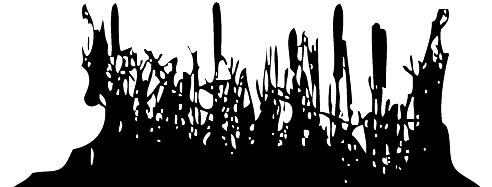Français
Finding Our Talk Season Two
- Episode 1: A Brighter Future - Mohawk
- Episode 2: Gentle Words - Maliseet
- Episode 3: The Spirit of Stories - Ojibway
- Episode 4: Language of The North - Naskapi
- Episode 5: Language of The Caribou People - Gwitchin
- Episode 6: Our Past Our Language - Secwepemc (Shushwap)
- Episode 7: Buffalo People - Dakota
- Episode 8 : Healing Power of Words - Dene
- Episode 9: Our Music is Our Language - Oneida
- Episode 10: Words from Our Scholars - Cree
- Episode 11: Words from Our Elders - Blackfoot
- Episode 12: Cultural Centres and Language
- Episode 13: The Dreamers - Dane-Zaa
Finding Our Talk Season One
Finding Our Talk Season Three
Episode 13: The Dreamers - Dane-Zaa
This episode examines how tradition is sustained orally and through personal contact. The Dane-Zaa people believe that story telling is more than just entertainment, it is important information that is being communicated from one person to another and from one generation to another. We also take a look at the process of relating old language by way of recordings and multi-media.
Background
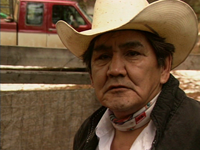 Dane-Zaa, an Athabaskan hunting people, have lived for centuries in Northeastern B.C. The Dane-zaa are a culture of "Dreamers and Hunters", when people traveled to the spirit world they returned with songs as proof of their travels, and with these songs came the knowledge of their ancient ancestors.
Dane-Zaa, an Athabaskan hunting people, have lived for centuries in Northeastern B.C. The Dane-zaa are a culture of "Dreamers and Hunters", when people traveled to the spirit world they returned with songs as proof of their travels, and with these songs came the knowledge of their ancient ancestors.
Before white settlers appeared, the Dane-zaa people would meet for a few weeks at a summer gathering place where they would rest, share stories, play games and engage in various activities to enjoy and benefit from various social exchange. Unfortunately that has all changed, and they are now struggling to bring back lost culture and language.
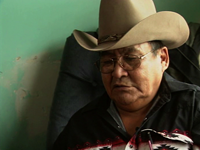 Part 1
Part 1
The beginning of this episode focuses on how video and multi-media presentations are closely related to the oral tradition of storytelling. We will examine the method that Garry Oker uses in order to get the younger generation interested in their culture and language.
Garry Oker is the cultural coordinator of the Doig River First Nation, he has produced a series of videos called 'Contact the People', which documents the past, present and future prospects of the Dane-zaa of Northeastern British Columbia. The video is composed entirely of audio and visual actualities recorded between 1966 and 2001.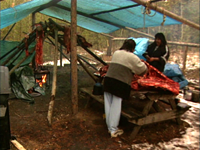
It is here we also meet various elders who work closely with Gary on his multimedia projects as language and cultural experts.
We will visit with Garry as he demonstrates to us how effectively this set of videos has helped the younger generation understand more about their culture and language. This is also a tool used in training the young people in multi-media, video and computers. Garry also uses animation, still photographs, archives, artifacts, music, traditional crafts and art. "it's multi-dimensions - stories within stories".
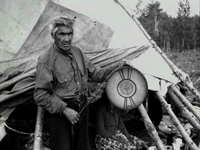 Part 2
Part 2
This second half of the episode we visit with Robin Ridington an anthropologist at the University of British Columbia. Robin has spent many years living and recording the Dane-zaa people. Using a Uher portable reel-to reel tape recorder he documented stories in the Beaver language and dreamers' dance songs. He has also written many books about the Dane-zaa people and culture.
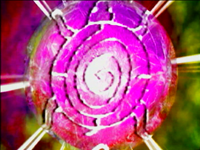 We view some of his works including writings that he has composed throughout his years with them. Part of this section looks at a feature-length film project based on the Dane-zaa experience, which both Robin and Garry are working on. One thing that they want to accomplish with the film project is to use the Dane-zaa language to encourage young people to use their language. We see them as they work on developing this treatment.
We view some of his works including writings that he has composed throughout his years with them. Part of this section looks at a feature-length film project based on the Dane-zaa experience, which both Robin and Garry are working on. One thing that they want to accomplish with the film project is to use the Dane-zaa language to encourage young people to use their language. We see them as they work on developing this treatment.
